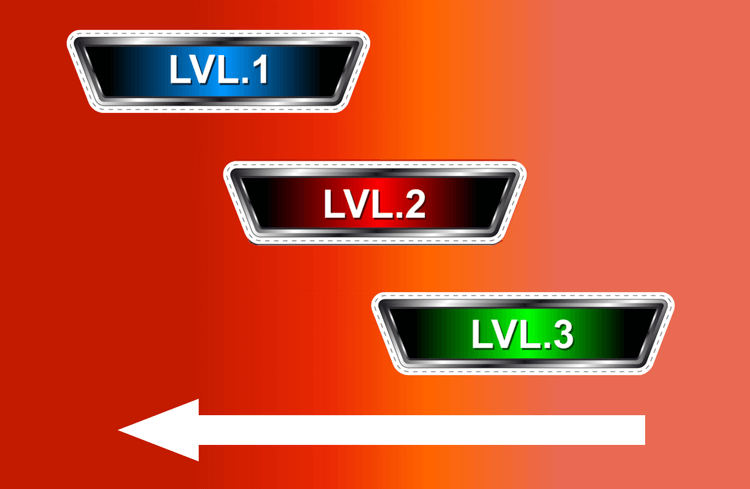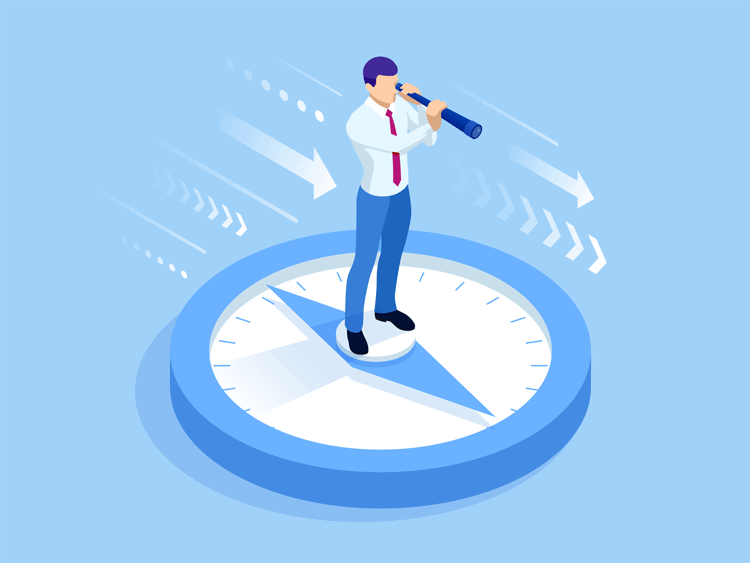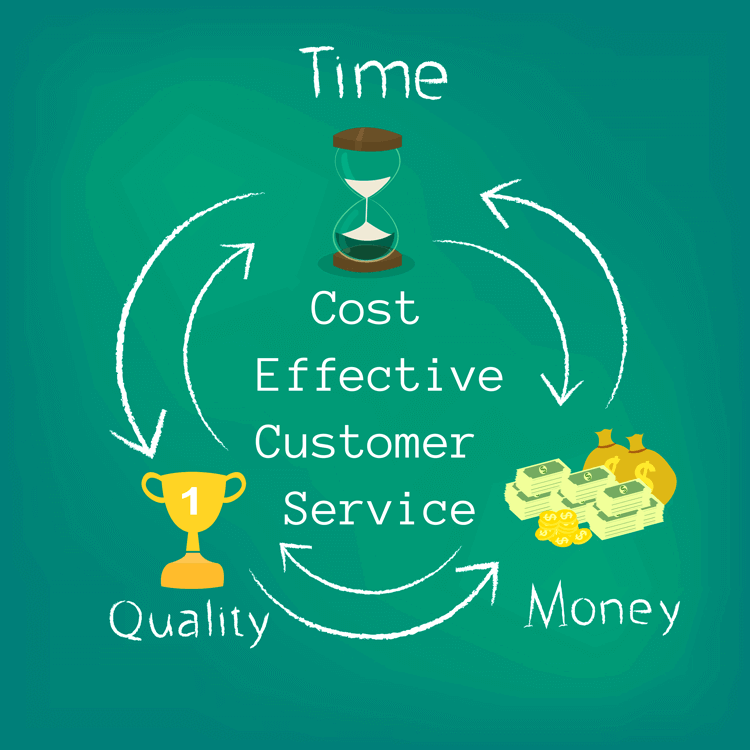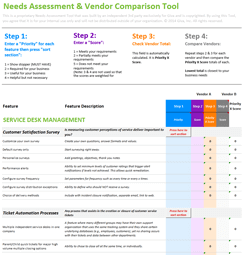Maximize Efficiency with Shift Left IT Service Management (ITSM): Analysis & How-To Guide
IT departments have always lived in a world of balancing two opposing activities with limited resources:
- Maintaining user productivity by responding when something breaks (an Incident) or a user request for services (a Service Request).
- "Maximizing the number of successful service and product changes by ensuring that risks have been properly assessed and authorizing changes." 1
What makes this juggling a challenge is the same high-level skills for planning, testing, and implementing changes are also the same resources required for resolving more complicated escalated incidents. Anyone that works in IT is familiar with firefighting interruptions. You are in your cube with your head around a time-sensitive change project when you receive a new incident that cannot wait. If you only had more people, then you could split the tasks between project management people and operational people. But is that really going to happen? So, what does happen is that you take the time to help out the users and skimp on the change project because projects are also time sensitive.

What is the Shift-Left Support Model Approach?
But is there a way out of this conundrum? There is, with MetricNet's Jeff Rumburg's introduction a few years ago of the concept of Shift Left2, because where you resolve incidents is the simple solution to IT's resource conundrum.
We define Shift Left as shifting from levels 2 and 3 support to level 1, the Service Desk.
Benefits of the Using Shft Left in ITSM Strategies
When MetricNet applied statistical analysis to the actual cost of resolving tickets at different levels, the results were astounding:
Level |
Example |
Cost/Ticket |
1 |
Service Desk |
$22 |
2 |
Desktop Support |
$69 |
3 |
IT Support |
$104 |
Field Support |
$221 |
|
Vendor |
$599 |
|
0 |
Self-Help |
$2 |
-1 |
Problem Management |
$0 |
-2 |
Search and Destroy (AI) |
$0 |
How did they calculate these numbers? The following are the metrics behind the numbers (which is more number-crunching than most IT departments do regularly):
- Cost (Per ticket, incident/service request)
- Quality (Customer satisfaction, first visit resolution rate, and % resolved level 1 capable)
- Ticket Handling (Average incident/service request work time)
- Service Level (Incident/service request response time, MTTR (Mean Time To Restore)
- Technician (Turnover, absenteeism, schedule adherence, training hours, tenure, job satisfaction)
- Productivity (Utilization, tickets/technician/month, ratio of technicians to total headcount)
- Workload (Tickets/seat/mo., incidents as a % of total ticket volume)
Indeed what you see in the above table is correct, and these trends are consistent over the years. It costs $47 more/ticket for Desktop Support resolution than Service Desk. That is 210% more! Or, if the Service Desk escalates to IT Support, that costs $82 more or 372% more. Yes, there are many good reasons to escalate. But are all escalations necessary?
How to Implement a Shift-Left Strategy for IT Service Management
Where should you begin? Start with a Shift-Left IT Strategy!
The Shift Left approach is a coordinated, long-term project IT should address to save money and free up project resources. It is a gradual effort, so Treat it like a project!
- Determine which incidents the Service Desk could resolve without escalating if level 2 and 3 provided training, tools, and knowledge articles.
- Each functional team should sort all incidents into the following categories:
- Those the Service Desk should resolve right now
- Those a trained Service Desk could resolve
- Those the department should continue to resolve
- With the Service Desk manager, develop a resolution strategy:
- Training needed (e.g., develop what training and when to train. Remember there are many levels 2 and 3 training teams)
- Tools needed
- Knowledge articles needed
- Ongoing feedback loops for continuous quality assurance
- Document results and report regularly to the project manager
Shift to the Left Methodology Means Making Service Desk Training Your Priority
In most IT departments, the common thought is training Service Desk staff is the responsibility of the Service Desk manager. This is certainly true in the areas of adaptability, documentation, attention-to-detail, and phone skills. But, when it comes to teaching the Service Desk staff what level 2 and 3 does, the level 2 and 3 people know best. Their skills and tools are unique to their departments. Start with the easiest, make it easier, and document so that someone that has never done it can do it:
- Have a long-term strategy for shifting some of your routine tickets to the Service Desk
- Assign a Service Desk training coordinator for your team
- A good place to start is to bring Service Desk staff through your department:
- Show them what you do every day
- Talk about your customers
- Show them what data in the incident record is important to your team and why
- Listen to their questions to understand their level of comprehension as it will provide clues to:
- What to document
- How to document
- What to train
- What to put into your knowledge articles
- With the Service Desk manager, plan your knowledge transfer:
- How many times a month?
- What time works for the Service Desk and how long?
- When should Service Desk staff be scheduled for their on-the-job training in your department?
- Put all these plans into a training skills matrix for all Service Desk staff and a requirement for new Service Desk employees
- Determine the best way to document training results:
- Percentage of tickets avoiding escalation
- Change in customer satisfaction score per month
- Accuracy of incident documentation
Steps for Monitoring and Re-Evaluating Shift Left for ITSM Continuous Improvemment
Now, you are working with the Service Desk and gradually shifting responsibility for certain types of incident resolutions to level 1. What are you going to do with your "extra time", besides spending more time on change management projects?
- Steadily increase level 1 resolution to "free time" for levels 2 and 3.
- Monitor incident tickets and provide feedback to ensure those incidents you review for your continuous improvement are perfect. You need good quality incident data to make good management decisions.
- Provide feedback on those tickets escalated to your group, and provide Service Desk feedback on how they could do it better.
- Create knowledge articles to help with Service Desk resolution and your own. If the Service Desk escalates, ask yourself if they had a knowledge article, or if provided more training would they still need to escalate?
- Ratchet up Problem Management to quickly resolve recurring incidents for your team. Set a quarterly goal of 10% reduction of recurring incidents. As per the table above, Problem Management stops incidents from occurring -- it will cost you $0.00.
- Create self-help applications for your specialty and put them on the IT/Service Desk portal. Self-help only costs $2.00 per ticket (the cost of technology).
- Research AI technology that could look at all the infrastructure events and determine if there is an indication that something is going wrong and fix it before it happens. That is what we are calling Search and Destroy.
- Increase the service design quality of change management projects to decrease defect rates (e.g., defects in services that support the service's secure operation, warranties, and quality). Start tracking root causes (Problem Management) that point to poor design.
- Become relentless about Continuous Improvement.
- Continue to monitor the two most important balanced scorecard metrics: Cost and Customer Satisfaction.
- Make job swapping a requirement. Service Desk agents spend a day with your team learning, and your staff rotates through the Service Desk to learn how to better help them.
- Enhance the monitoring and event management practice to automate fixing of outages.
- Repeat, repeat, repeat!
Maximizing IT Service Desk Resolution with a Shift-Left Approach
In summary, Shift to the Left means for your business not only saving money but increasing customer satisfaction.
MetricNet found from their studies of organizations that embraced the Shift-Left strategy remarkable level 1 results:
- Primary
- The first-level resolution rate increased (more time for new skills)
- User self-completion rate increased (user self-help)
- Tickets per user per month decreased (Problem Management eliminated recurring incidents)
- Secondary
- Cost per ticket increased (yes, because the Service Desk spends more time on more difficult tickets)
- Customer satisfaction increased (customers like it when the person they call resolves without escalating)
- Ticket handle time increased (again, yes, because the Service Desk spends more time on more difficult tickets)
Try it and experience the difference!
Footnotes:
1. Axelos® Global Best Practice, ITIL Foundation, ITIL 4 Edition, 2019
2. MetricNet, "Metrics Unleashed | Shift-Left with Jeff Rumburg, April 27, 2020





